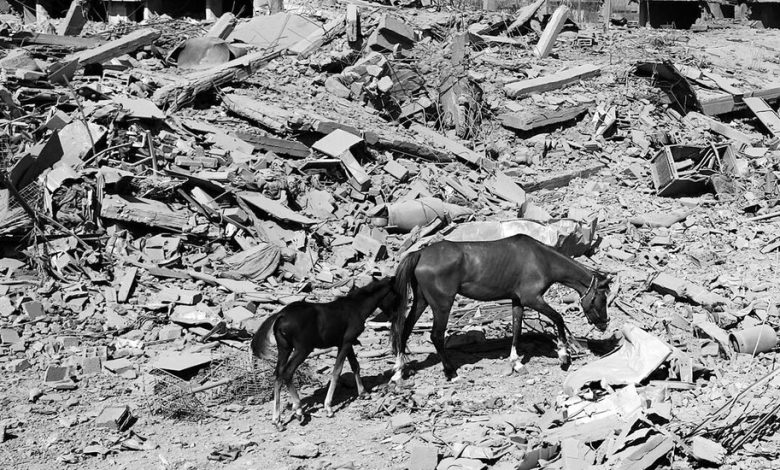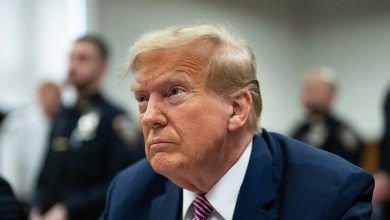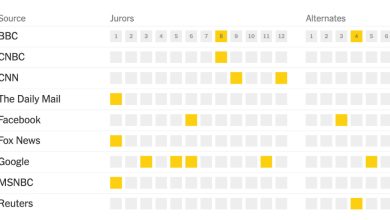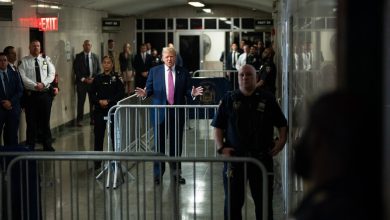I Fought for the I.D.F. in Gaza. It Made Me Fight for Peace.

When my Israeli infantry unit arrived at the first village in Gaza, in July 2014, we cleared houses by sending grenades through windows, blowing doors open and firing bullets into rooms to avoid ambush and booby traps. We were told Palestinian civilians had fled.
I realized this wasn’t true as I stood over the corpse of an elderly Palestinian woman whose face had been mutilated by shrapnel. She had been lying on the sand floor of a shack, in a pool of blood.
That was my experience the last time Israeli troops entered the Gaza Strip in a large-scale way, when my special forces unit, attached to the 993rd Nahal Brigade, was one of the first to go in.
Like the invasion that the Israeli military has said is imminent, that campaign was precipitated by atrocities carried out by Hamas terrorists. On June 12 of that year, Hamas kidnapped and murdered three Israeli teenagers; soon after, Israelis murdered a Palestinian teenager. The horrific exchange escalated into a larger conflict; ultimately some 70 Israelis and 2,250 Palestinians were killed over seven weeks. Then, as now, Israelis were told that we were going in to deal a decisive blow to Hamas.
As Israeli troops made incursions into Gaza on Friday and prepared for possible street-by-street urban combat, complicated by the presence of more than 200 hostages still being held by Hamas, I know firsthand the terror they can expect in an landscape of postapocalyptic bombed-out neighborhoods, where Hamas fighters could be lying in wait. There’s also the constant fear of coming under attack by mortars and missiles, and the possibility of a gunman emerging from the group’s underground network of tunnels.
Those three fateful weeks inside the Gaza Strip transformed me from a deeply religious, Modern Orthodox yeshiva student and West Bank settler into an activist with the movement opposing the Israeli occupation of Palestinian territories, first with the antiwar veterans organization Breaking the Silence and now with Extend, a group that connects Palestinian and Israeli human rights leaders with American Jewish audiences.
All our casualties and the suffering brought on Palestinians in Gaza accomplished nothing since our leaders refused to work on creating a political reality in which more violence would not be inevitable. While I believe in self-defense, fighting in Gaza taught me that if my government doesn’t change its approach from crushing Palestinian hope to committing to Palestinian independence, not only will this war kill an untold number of Israelis and Palestinians in addition to the thousands who already have died, but it also will not decisively end terror. A ground invasion is doomed to failure.
Even today, I remember how the ground shook from the constant explosions as we moved into Gaza at dusk at the start of the ground invasion on July 17. As we marched into the village of Umm al-Nasr, our Merkava tanks plowed through the fields next to us, and the aerial and artillery bombardments created relentless thunder and lightning — what we jokingly called the sound-and-light show.
Our main task over the two weeks I was in the northern Gaza Strip was to clear and secure a perimeter in urban areas to enable combat engineers to identify and demolish tunnels leading into Israel. We never wanted to stay stationary and become easy targets, so we would take up positions in a new house every night. Each house had to be cleared; in one, I found a Kalashnikov rifle with a combat vest and an explosive device. At one point, I listened in terror to graphic reports from our radioman of soldiers from my unit searching for body parts after a missile struck a nearby house they had taken over, injuring and killing some of my comrades.
The battle was unpredictable as we faced an enemy that used the complicated terrain to its advantage. It seemed that the Hamas fighters, like most of the civilians, had fled from our advance. Yet on the fourth day of the ground invasion, as we moved toward the Al-Burrah neighborhood in Beit Hanoun, a city in northeast Gaza, Hamas fighters suddenly came out from a tunnel behind us and killed four soldiers at the border fence.
As we withdrew from Beit Hanoun, we heard the roar of Air Force fighter jets overhead, followed by deafening explosions and towering plumes of debris and smoke rising from Al-Burrah. I later learned that in those moments, the airstrikes killed eight members of the Wahdan family, mostly women and children, whose home soldiers from my unit had occupied for days while the family was there.
At one point, I scribbled some thoughts on a piece of paper. I wrote that some members of my team had been tallying the number of soldiers killed and discussing whether this operation was worth the losses. “I think it could be worth it,” I wrote, “as long as we decisively eliminate the threat.”
That’s the lie they told us, and the lie that’s being repeated today: that we can decisively eliminate the threat of Hamas through a military operation. In the years since, Hamas has only grown stronger, despite our sacrifices and despite the death and destruction we had wrought on Gaza.
These periodic episodes of killing and destruction, which Israeli commentators and politicians cynically call “mowing the lawn,” have been a price Israel was willing to pay to avoid being pushed toward a two-state solution. We chose to “manage” the conflict through a combination of brute force and economic incentives, instead of working to solve it by ending our perpetual occupation of Palestinian territory.
Many of my Palestinian human rights partners who organize nonviolent protests are targeted and harassed by the Israeli military. I believe these policies have the goal of preventing pressure for a Palestinian state and permitting Israeli settlement development and creeping annexation in the West Bank.
For years, many of us on the left in Israel have been warning that we will never have peace and security until we find a political agreement in which Palestinians achieve freedom and independence. It isn’t just human rights activists taking this position: Even Ami Ayalon, the former head of the Israeli security service Shin Bet, has argued for years that Palestinian terror can be defeated only by creating Palestinian hope.
Tragically, many of those who made this argument were also the victims of Hamas’s heinous attack on Oct. 7. They included a fellow member of my unit who also served with me in Breaking the Silence, an anti-occupation veterans group. He was a security guard at a kibbutz attacked by Hamas and fought the terrorists for seven hours until he ran out of ammunition and was murdered.
I left his funeral last week crushed, knowing we had lost such a righteous soul. To me it’s clear. My friend not only fought against Hamas during his final moments to protect his friends and family; he also fought against Hamas during years of activism against the occupation.
My heart is broken but I am more resolved than ever to continue his legacy.
Benzion Sanders is the Jerusalem program director of Extend, a group that connects Palestinian and Israeli human rights leaders with American Jewish audiences, and a former staff member of Breaking the Silence, an anti-occupation veterans group.
The Times is committed to publishing a diversity of letters to the editor. We’d like to hear what you think about this or any of our articles. Here are some tips. And here’s our email: [email protected].
Follow The New York Times Opinion section on Facebook, Twitter (@NYTopinion) and Instagram.



